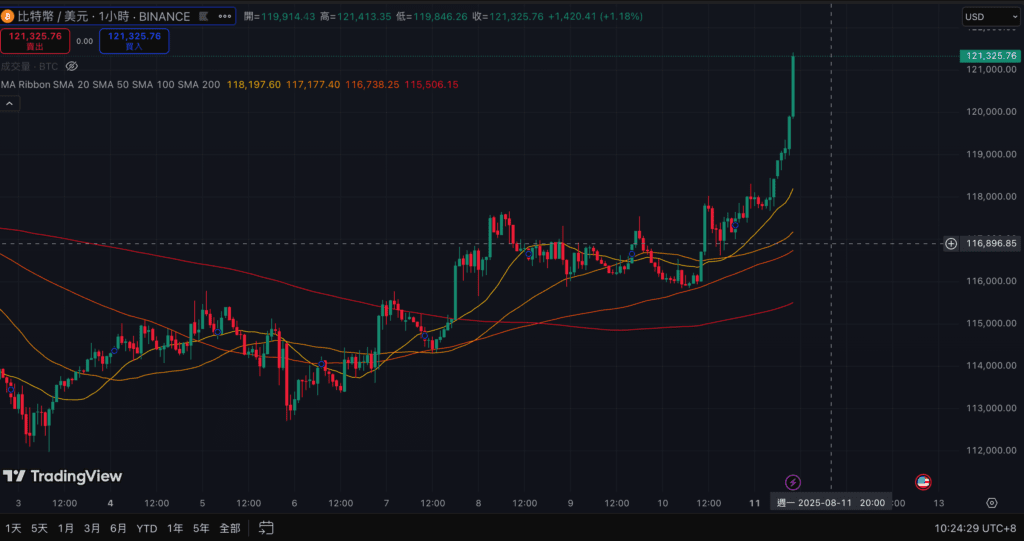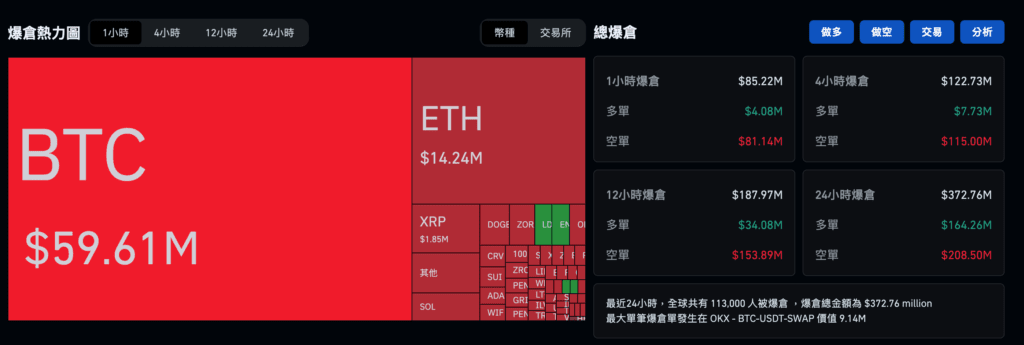Bitcoin (BTC) wrote another milestone on the morning of August 11, with the current price around $121,367, a daily increase of 3.8%, officially stabilizing above the $120,000 mark. This is the most impressive single-day closing price this year, boosting bullish sentiment to a peak.

Wall Street giants: aiming for the $250,000 mark
Overall, due to the strong upward momentum, data from Coinglass shows that the liquidation amount in the last 24 hours reached $370 million, with liquidations of $60 million for Bitcoin alone within just one hour. In response, Fundstrat co-founder and BitMine chairman Tom Lee expressed optimism, stating that Bitcoin could reach $250,000 by 2025.

Three major driving forces behind the $121,400 mark
Firstly, the regulatory environment is becoming clearer. The U.S. Congress has recently shown a friendly stance towards crypto assets, opening the green light for multiple Bitcoin ETFs and lowering barriers for large institutional entry. Secondly, institutional funds continue to accumulate. Since the halving in April, selling pressure from miners has decreased, and with regular investments from retirement funds and family offices, the bullish structure is increasingly solidifying. Thirdly, the global macro environment remains relatively loose, with inflation and geopolitical risks driving safe-haven demand, allowing Bitcoin and gold to benefit simultaneously. Technically, the monthly high of $115,800 set in July has now turned into support, and the market generally views $133,000 as the next level of resistance.
In summary, this is the result of the resonance of regulation, funds, and supply. At the same time, liquidation rumors that contradict the market remind participants to verify information before trading, and not to be deterred or lured by 'big numbers', which is key to participating in this bull market. In the coming weeks, investors should continue to pay attention to ETF increments, changes in miner positions, and the potential impact of inflation data on the funding situation, continuously calibrating risk positions.


